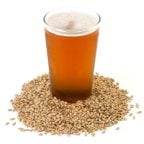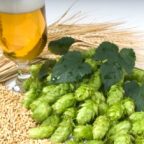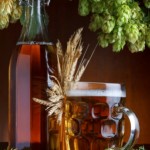tips
Here’s a look at how six Northern California breweries are crafting conscious, sustainable beers, and why they do it.
The post The Localization of Beer Marches On appeared first on CraftBeer.com.
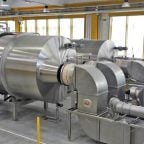 This week I look at the malting process, how we commonly group malts and the impacts for beer brewing. The Malting Process The malting process starts with raw barley grain, harvested from the field. The grain is dry when brought into the malt house, but the first step is to immerse the grain into water […]
This week I look at the malting process, how we commonly group malts and the impacts for beer brewing. The Malting Process The malting process starts with raw barley grain, harvested from the field. The grain is dry when brought into the malt house, but the first step is to immerse the grain into water […] 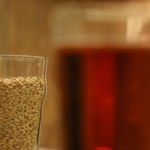 This week I cover some of the changes you need to make to brew a high gravity beer using BeerSmith software. High gravity beers (generally over 1.060 or so) do require some minor changes to your recipe and equipment profile as well as some process changes for brewing. High Gravity Brewing Considerations I’ve written a […]
This week I cover some of the changes you need to make to brew a high gravity beer using BeerSmith software. High gravity beers (generally over 1.060 or so) do require some minor changes to your recipe and equipment profile as well as some process changes for brewing. High Gravity Brewing Considerations I’ve written a […] Summer is here! Melissa Corbin serves up 11 craft-beer destinations and happenings, from the Pacific Northwest to the Deep South.
The post A Toast to Summer: Festivals, Patios, and Benefits appeared first on CraftBeer.com.
 This week I take a look at the very important topic of blending traditional sour and barrel aged beers. Traditional sour beer brewing, where fermentation is done before the souring, as well as many barrel aged beers can be hard to get right the first time. Both involve very long maturation cycles, relatively high alcohol […]
This week I take a look at the very important topic of blending traditional sour and barrel aged beers. Traditional sour beer brewing, where fermentation is done before the souring, as well as many barrel aged beers can be hard to get right the first time. Both involve very long maturation cycles, relatively high alcohol […] 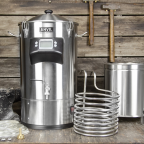 This week I take a look at the rapid rise of all-in-one BIAB style brewing systems for all grain brewing. These affordable, compact systems have quickly become the favorite of beginner and experienced brewers alike. All-in-One Brewing Systems Only a few years ago, most serious homebrewers had full-size three tier brewing systems for their all […]
This week I take a look at the rapid rise of all-in-one BIAB style brewing systems for all grain brewing. These affordable, compact systems have quickly become the favorite of beginner and experienced brewers alike. All-in-One Brewing Systems Only a few years ago, most serious homebrewers had full-size three tier brewing systems for their all […]  This week I take a look at the reason why most beer brewers have moved to a single boil addition instead of having short duration flavor and aroma hop additions in the boil. The History of Short Duration Boil Additions When I started brewing back in 1987 it was very common to use short duration, […]
This week I take a look at the reason why most beer brewers have moved to a single boil addition instead of having short duration flavor and aroma hop additions in the boil. The History of Short Duration Boil Additions When I started brewing back in 1987 it was very common to use short duration, […]  Randy Mosher, the author of Radical Brewing and Mastering Homebrew, joins me this week to discuss lager yeast flavors and tips. Subscribe on iTunes to Audio version or Video version or Spotify or Google Play Download the MP3 File– Right Click and Save As to download this mp3 file. Your browser does not support the […]
Randy Mosher, the author of Radical Brewing and Mastering Homebrew, joins me this week to discuss lager yeast flavors and tips. Subscribe on iTunes to Audio version or Video version or Spotify or Google Play Download the MP3 File– Right Click and Save As to download this mp3 file. Your browser does not support the […]  Mitch Steele joins me from New Realm Brewing to discuss Lager brewing, supply chains and the evolving world of Craft Brewing. Subscribe on iTunes to Audio version or Video version or Spotify or Google Play Download the MP3 File– Right Click and Save As to download this mp3 file. Your browser does not support the […]
Mitch Steele joins me from New Realm Brewing to discuss Lager brewing, supply chains and the evolving world of Craft Brewing. Subscribe on iTunes to Audio version or Video version or Spotify or Google Play Download the MP3 File– Right Click and Save As to download this mp3 file. Your browser does not support the […]  This week I take a look at some of the factors affecting how bitterness in beer is perceived and how they interact in a finished beer. Bitterness Perception in Beer For many years, I thought that the International Bitterness Units (IBU) level drove the overall bitterness level in a finished beer. As I matured as […]
This week I take a look at some of the factors affecting how bitterness in beer is perceived and how they interact in a finished beer. Bitterness Perception in Beer For many years, I thought that the International Bitterness Units (IBU) level drove the overall bitterness level in a finished beer. As I matured as […] Fairbanks, Alaska, attracts visitors hoping to capture sight of the aurora borealis. If you're hunting aurora, these Fairbanks craft breweries should be part of your adventure.
The post Aurora Hunting and Craft Beering in Fairbanks, Alaska appeared first on CraftBeer.com.
 This week I take a look at the best way to incorporate spices and flavor extracts into your beer brewing process. Examples of Spices, Herbs and Flavor Extracts Beer was not traditionally made with hops. In fact, the use of hops in beer dates back only about 500 years, while beer itself was introduced at […]
This week I take a look at the best way to incorporate spices and flavor extracts into your beer brewing process. Examples of Spices, Herbs and Flavor Extracts Beer was not traditionally made with hops. In fact, the use of hops in beer dates back only about 500 years, while beer itself was introduced at […]  The 2021 BJCP Beer Style guidelines were released on 29 December, 2021 by the Beer Judge Certification Program, and are now available for BeerSmith web and desktop. The 2021 guidelines are considered a modest revision of the 2015 style guide, and an effort was made to maintain the majority of the categories and style names […]
The 2021 BJCP Beer Style guidelines were released on 29 December, 2021 by the Beer Judge Certification Program, and are now available for BeerSmith web and desktop. The 2021 guidelines are considered a modest revision of the 2015 style guide, and an effort was made to maintain the majority of the categories and style names […] 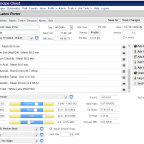 I frequently get the question of how to transition BeerSmith data from one computer to another if you have purchased a new computer. This week I’m going to cover how to most easily transfer your local brewing data. It is important to note that BeerSmith desktop stores all of your “My Recipe” data locally on […]
I frequently get the question of how to transition BeerSmith data from one computer to another if you have purchased a new computer. This week I’m going to cover how to most easily transfer your local brewing data. It is important to note that BeerSmith desktop stores all of your “My Recipe” data locally on […]  John Palmer and Denny Conn join me this week to discuss simplified homebrewing and ways to save time and keep your beer brewing fun. Subscribe on iTunes to Audio version or Video version or Spotify or Google Play Download the MP3 File– Right Click and Save As to download this mp3 file. Your browser does […]
John Palmer and Denny Conn join me this week to discuss simplified homebrewing and ways to save time and keep your beer brewing fun. Subscribe on iTunes to Audio version or Video version or Spotify or Google Play Download the MP3 File– Right Click and Save As to download this mp3 file. Your browser does […]  John Blichmann joins me this week to discuss how to design the perfect home brewery. John is the President of Blichmann Engineering and an avid home brewer. Subscribe on iTunes to Audio version or Video version or Spotify or Google Play Download the MP3 File– Right Click and Save As to download this mp3 file. […]
John Blichmann joins me this week to discuss how to design the perfect home brewery. John is the President of Blichmann Engineering and an avid home brewer. Subscribe on iTunes to Audio version or Video version or Spotify or Google Play Download the MP3 File– Right Click and Save As to download this mp3 file. […]  With the growing popularity of small tabletop all-grain brewing systems I decided to take a look this week at how to set up and use these systems in BeerSmith. Tabletop All-in-one Brewing Systems There has been an explosion in the popularity of small all-in-one all grain electric brewing systems. These include systems like the DigiMash, […]
With the growing popularity of small tabletop all-grain brewing systems I decided to take a look this week at how to set up and use these systems in BeerSmith. Tabletop All-in-one Brewing Systems There has been an explosion in the popularity of small all-in-one all grain electric brewing systems. These include systems like the DigiMash, […]  This week I take a look at the differences between alpha and beta amylase which act during the mash to convert longer starch chains to simple sugars in beer. Alpha vs Beta Amylase Enzymes are naturally produced in malted barley during the malting process. Chief among these are alpha amylase and beta amylase. They are […]
This week I take a look at the differences between alpha and beta amylase which act during the mash to convert longer starch chains to simple sugars in beer. Alpha vs Beta Amylase Enzymes are naturally produced in malted barley during the malting process. Chief among these are alpha amylase and beta amylase. They are […]  This week I cover some of the basic concepts of using fruit in BeerSmith for making beer, wine, cider or meads. Fruit Basics BeerSmith 3 supports the use of fruit juice, purees, honey and whole fruits natively when making beer, mead, wine and cider recipes. Typically most fruits are added during primary or secondary fermentation. […]
This week I cover some of the basic concepts of using fruit in BeerSmith for making beer, wine, cider or meads. Fruit Basics BeerSmith 3 supports the use of fruit juice, purees, honey and whole fruits natively when making beer, mead, wine and cider recipes. Typically most fruits are added during primary or secondary fermentation. […]  This week I take a look at one of those little known features in BeerSmith brewing software that can make building recipes just a little easier. This feature is available in the desktop, mobile and web based versions of BeerSmith. What is “Save as Default”? When you build a recipe in BeerSmith from scratch you […]
This week I take a look at one of those little known features in BeerSmith brewing software that can make building recipes just a little easier. This feature is available in the desktop, mobile and web based versions of BeerSmith. What is “Save as Default”? When you build a recipe in BeerSmith from scratch you […] 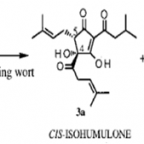 This week I take look at hop isomerization in beer brewing and how it applies to brewers. Isomerized alpha acids in beer are the primary bittering compound used to offset the sweetness of the malt in beer. What is Isomerization? Isomerization is a process where a molecule is transformed into another molecule that contains the […]
This week I take look at hop isomerization in beer brewing and how it applies to brewers. Isomerized alpha acids in beer are the primary bittering compound used to offset the sweetness of the malt in beer. What is Isomerization? Isomerization is a process where a molecule is transformed into another molecule that contains the […] On IPA Day Balter’s Scott Hargrave chats their new West Coast version and IPA evolution.
The post Third time’s a charm in Balter’s quadrilogy appeared first on Beer & Brewer.

